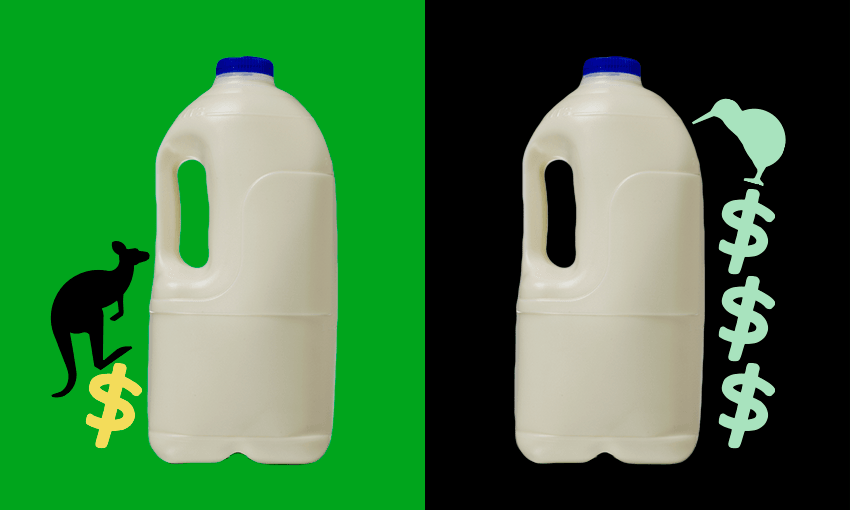A recent emigrant to Sydney takes a magnifying glass to her shrunken supermarket bill to compare food prices here and across the Tasman – and how much they’ve gone up over time.
Knowing that I had recently moved to Australia, a new co-worker asked me what they should show their family who were about to visit Sydney from New Zealand. The fruit aisle in the supermarket, I said.
This seems weird to Australians, but it instantly makes sense to anyone who has moved here from New Zealand. If you don’t send your friends back home photos of fruit prices, are you really a New Zealander living in Australia?
I wanted to dig into the differences and see whether the impression that food was so much more expensive in New Zealand really held up. To do this, I compared Countdown in New Zealand with Woolworths in Australia, since they are owned by the same company.
I chose nine items from each of the broad categories of food that both New Zealand and Australia track in their price indices (fruit and vegetables, breads and cereals, meat, poultry and fish, and milk, cheese and eggs). These prices are those listed online as at April 7, 2023 and did not include any temporary sales or price reductions. Wherever possible, I compared the same brand, including the Countdown/Woolworths own brand in many instances.
Of course, this is not necessarily a representative sample of grocery prices. But in the absence of that kind of data being available for both countries, it does get at the experience of grocery shopping in Australia compared to New Zealand.
We can see that the vast majority of items are more expensive in New Zealand. A head of broccoli, which will set you back $3.99 in New Zealand, costs NZ$1.37 in Australia. Eggs are half the price, and 500g of tasty cheese is almost NZ$5 cheaper.
A few items cost slightly more in Australia, once the exchange rate is accounted for. Butter and Sealord frozen hoki fillets, which are both products of New Zealand, are 30c and 7c more expensive here respectively. Bananas are $1.85 more expensive per kilo, likely because Australia doesn’t import bananas to avoid the risk of disease to its local banana crops.
All together, this trolley of items would have cost NZ$272.57 in New Zealand, and NZ$218.46 in Australia (or A$205.35). This means it costs 25% more in New Zealand than in Australia, once you’ve accounted for the exchange rate between New Zealand and Australian dollars.
This was most pronounced for milk, cheese and eggs, which as a group were almost 40% more expensive in New Zealand than Australia. Meat, poultry and fish were 31% more expensive, while fruit and vegetables cost 25% more in New Zealand. Bread and cereals was the only group that was even remotely similar, with a 4% markup in New Zealand.
However, when you talk to people from Australia, they will tell you that food prices here have been increasing significantly. While it can be hard to summon up much sympathy for someone who doesn’t consider cherry tomatoes a luxury, I also wanted to look at how prices have changed over time across the two countries.
These numbers come from Statistics New Zealand and the Australian Bureau of Statistics and therefore are designed to be representative of grocery prices across the country, unlike my sample.
What they show is that food prices have been rising at a very similar rate across New Zealand and Australia. Since September 2017, New Zealand has seen a 25% increase in the price of food overall. In Australia, this is 24%. New Zealand has seen a slightly bigger increase for fruit and vegetables and milk, cheese and eggs, and a slightly smaller increase compared to Australia for the other categories.
Overall, the rate at which prices have been increasing is very similar across New Zealand and Australia. This means that the experience of shopping is much the same. We mentally anchor to the prices that we’re used to, and are acutely aware of how much higher the prices that we’re paying now are.
However, it’s also clear that New Zealand started at a much higher level of prices to begin with. That’s to say nothing of the difference in income between the two countries. Put simply, New Zealanders are being squeezed in the supermarket in a way that’s just not the same.

